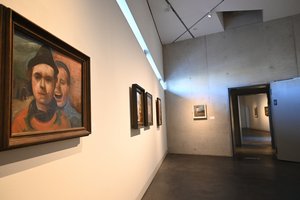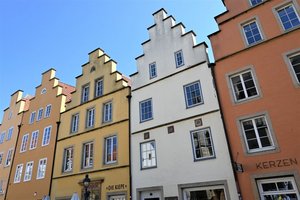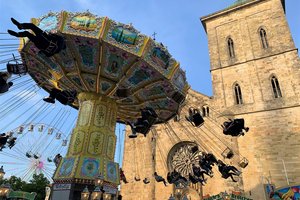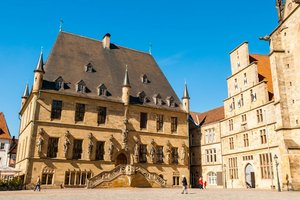Today, the former residence of the Osnabrück prince bishops is characterised by student life.
The Osnabrück Palace as Residence
At the end of the Thirty Years' War in 1648, it was decreed that Osnabrück should henceforth be ruled alternately by a Catholic and a Protestant Prince-Bishop. In 1662 this office was taken over by the Lutheran Guelph Ernst August zu Braunschweig-Lüneburg. Together with his wife Sophie von der Pfalz, he initially resided in Iburg Castle. For lack of a suitable residence in the city, this was the residence of the prince-bishops. In order to do justice to his wishes for representation and at the same time to limit the city of Osnabrück's aspirations for independence, the Prince-Bishop's Palace on Neuer Graben was built in the Baroque style between 1667-1675. The four-storey main building of the four-wing complex had, among other things, a house chapel and a banqueting hall. The design of the Baroque garden according to the plans of the well-known garden architect Martin Charbonnier was the responsibility of the prince-bishop's wife, who incorporated her impressions gained in France. When the couple took over the government in Hanover in 1679 and subsequently left Osnabrück, Sophie mourned her residence: "I will miss the garden and the castle in Osnabrück all my life. My garden, my flowers, my house, my furniture: I find myself deprived of these pleasures all at once."
The castle later still served as a residence for the son of the previous rulers, Ernst August II, the first British king from the House of Hanover, George I died here in 1727. After that, the castle was no longer used as a residence and was in danger of falling into disrepair. With the abolition of the old empire in 1803, the castle lost its function as a prince-bishop's residence and was henceforth used for administrative purposes.
The Osnabrück Castle in the Third Reich
In 1937/38, the west wing of the castle was extended for use by the Secret State Police (Gestapo). They now had official rooms, prison cells, interrogation and torture rooms there. One area of the cellar was used as an air-raid shelter during the war and was preferred by the Gestapo for its "aggravated interrogations." Since 2001, the "Gestapokeller im Osnabrücker Schloss e.V." (Gestapo Cellar Memorial in Osnabrück Castle) has been housed in the preserved detention cells. After the Night of Broken Glass in November 1938, Jewish Osnabrückers were imprisoned in the cellars before being deported to Buchenwald concentration camp. Political prisoners, other Jewish citizens as well as foreign forced labourers were later also initially held in the cells. A plaque on the west wing has referred to the victims of the Gestapo in Osnabrück since 1995.
The Osnabrück Palace today
The Osnabrück Palace was severely damaged by bombing in the Second World War, only the outer walls survived. The building was rebuilt by 1953, and the palace garden was redesigned in its original area by Prof. Werner Lendholt.
After the College of Education initially used the palace, the premises were integrated into the new University of Osnabrück in 1973, which has had its administrative headquarters in the palace since 1974. The departments of Music/Musicology and Protestant Theology are also housed in the main building.






